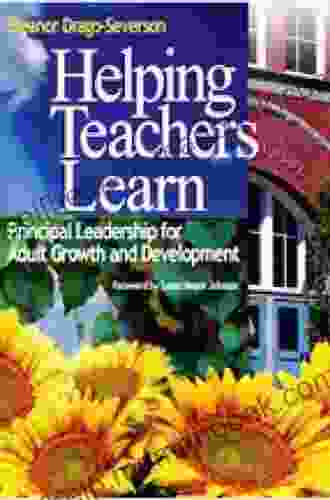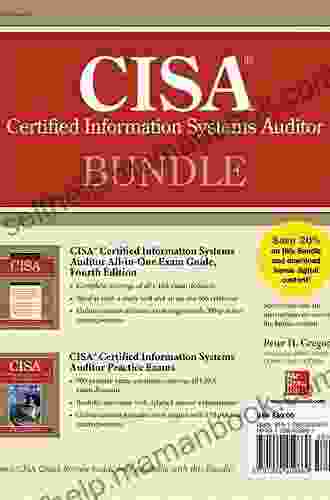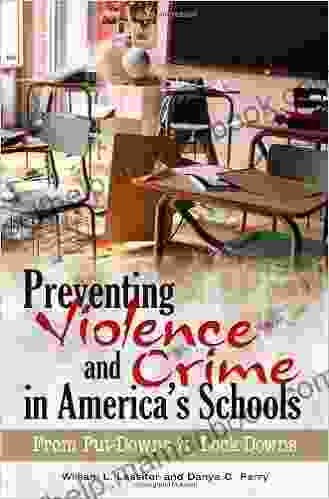Preventing Violence and Crime in American Schools: A Comprehensive Guide

The safety and well-being of students in American schools have become a paramount concern in recent years. The tragic incidents of school shootings and other acts of violence have brought the issue to the forefront of public discourse and sparked urgent calls for action. This comprehensive guide provides a thorough analysis of the issue of violence and crime in American schools, examining its root causes, exploring evidence-based prevention strategies, and offering practical recommendations for creating safer learning environments.
School violence and crime encompass a wide range of behaviors that threaten the safety and well-being of students, staff, and visitors. These include physical altercations, bullying, harassment, sexual abuse, and the use of weapons. While school shootings may garner the most attention, they are relatively rare compared to other forms of violence. However, all forms of school violence can have devastating consequences for individuals and communities.
The causes of school violence are complex and multifaceted, often involving a combination of individual, family, school, and community factors. Risk factors for school violence include:
5 out of 5
| Language | : | English |
| File size | : | 1974 KB |
| Text-to-Speech | : | Enabled |
| Screen Reader | : | Supported |
| Word Wise | : | Enabled |
| Print length | : | 227 pages |
- Individual factors: mental health issues, history of trauma or abuse, exposure to violence at home or in the community, substance abuse
- Family factors: poverty, family instability, lack of parental supervision or support
- School factors: a lack of positive school climate, poor relationships between students and staff, inadequate security measures
- Community factors: high crime rates, poverty, lack of opportunity, gang activity
Preventing violence and crime in schools requires a comprehensive approach that addresses both the root causes and potential risk factors. Evidence-based prevention strategies that have proven effective in reducing school violence include:
Identifying and supporting students at risk for violence is crucial. Early intervention programs that provide mental health support, academic assistance, and positive peer relationships can help reduce the likelihood of violent behavior.
A positive school climate characterized by respect, cooperation, and inclusivity can help prevent violence by creating a safe and supportive learning environment. Schools can promote a positive climate through conflict resolution programs, peer mediation, and community building activities.
While security measures alone cannot prevent school violence, they can create a deterrent and provide a level of protection for students and staff. Schools should implement comprehensive security plans that include access control, surveillance cameras, and training for staff and students.
Mental health disorders, particularly depression and anxiety, are often correlated with increased risk for school violence. Providing access to mental health services, including screening, counseling, and medication management, can help identify and treat students in need.
Schools cannot prevent violence alone. Collaboration with families, law enforcement, and community organizations is essential for creating a comprehensive prevention network. Community involvement can include mentoring programs, after-school activities, and parent outreach initiatives.
In addition to implementing evidence-based prevention strategies, policy changes are also needed to address the root causes of school violence and create a safer learning environment for all students. Recommended policy measures include:
Restricting access to firearms, particularly assault weapons, can reduce the risk of school shootings. Policymakers should consider measures such as universal background checks, limits on magazine capacity, and bans on certain types of weapons.
Increased investment in mental health services is crucial for identifying and treating students at risk for violence. Schools should be equipped with the resources to provide mental health screenings, counseling, and medication management.
Poverty and economic inequality are significant risk factors for school violence. Policies that address poverty, such as expanding access to affordable housing, healthcare, and education, can help reduce the likelihood of violence.
The disproportionate disciplinary treatment of minority students, particularly Black students, can lead to a cycle of violence and incarceration. Policymakers should focus on reducing suspensions and expulsions and providing alternatives to traditional punishment.
Preventing violence and crime in American schools is a complex but achievable goal. By implementing evidence-based prevention strategies, advocating for policy changes, and fostering community collaboration, we can create safer learning environments where all students can thrive. Failure to address this issue not only compromises the well-being of our children but also undermines the future of our society. It is time for urgent action to ensure that every child has the opportunity to learn and grow in a safe and supportive environment.
5 out of 5
| Language | : | English |
| File size | : | 1974 KB |
| Text-to-Speech | : | Enabled |
| Screen Reader | : | Supported |
| Word Wise | : | Enabled |
| Print length | : | 227 pages |
Do you want to contribute by writing guest posts on this blog?
Please contact us and send us a resume of previous articles that you have written.
 Top Book
Top Book Novel
Novel Fiction
Fiction Nonfiction
Nonfiction Literature
Literature Paperback
Paperback Hardcover
Hardcover E-book
E-book Audiobook
Audiobook Bestseller
Bestseller Classic
Classic Mystery
Mystery Thriller
Thriller Romance
Romance Fantasy
Fantasy Science Fiction
Science Fiction Biography
Biography Memoir
Memoir Autobiography
Autobiography Poetry
Poetry Drama
Drama Historical Fiction
Historical Fiction Self-help
Self-help Young Adult
Young Adult Childrens Books
Childrens Books Graphic Novel
Graphic Novel Anthology
Anthology Series
Series Encyclopedia
Encyclopedia Reference
Reference Guidebook
Guidebook Textbook
Textbook Workbook
Workbook Journal
Journal Diary
Diary Manuscript
Manuscript Folio
Folio Pulp Fiction
Pulp Fiction Short Stories
Short Stories Fairy Tales
Fairy Tales Fables
Fables Mythology
Mythology Philosophy
Philosophy Religion
Religion Spirituality
Spirituality Essays
Essays Critique
Critique Commentary
Commentary Glossary
Glossary Bibliography
Bibliography Index
Index Table of Contents
Table of Contents Preface
Preface Introduction
Introduction Foreword
Foreword Afterword
Afterword Appendices
Appendices Annotations
Annotations Footnotes
Footnotes Epilogue
Epilogue Prologue
Prologue Amber Foster
Amber Foster Valter Longo
Valter Longo Stu Jones
Stu Jones Tien Tzuo
Tien Tzuo Brant Hansen
Brant Hansen Reta Halteman Finger
Reta Halteman Finger Evan Ryan
Evan Ryan Octave Mirbeau
Octave Mirbeau Malcolm Gladwell
Malcolm Gladwell Anna Garnet
Anna Garnet Chantal Bilodeau
Chantal Bilodeau Maggie Sokolik
Maggie Sokolik Amanda Montell
Amanda Montell Fonda Lee
Fonda Lee Michael Black
Michael Black Gaurav Mahajan
Gaurav Mahajan Ambrose Bierce
Ambrose Bierce John Corwin
John Corwin Jonathan Reisman
Jonathan Reisman Michaela Carter
Michaela Carter
Light bulbAdvertise smarter! Our strategic ad space ensures maximum exposure. Reserve your spot today!

 Banana YoshimotoUnveiling the Reality Behind the Enchanting Facade of Pop Idols: The Pop...
Banana YoshimotoUnveiling the Reality Behind the Enchanting Facade of Pop Idols: The Pop...
 John SteinbeckPrincipal Leadership for Adult Growth and Development: A Transformative Guide...
John SteinbeckPrincipal Leadership for Adult Growth and Development: A Transformative Guide...
 Jamie BlairMama Slippers Play in Two Acts: Exploring Familial Bonds and Identity Through...
Jamie BlairMama Slippers Play in Two Acts: Exploring Familial Bonds and Identity Through... Shannon SimmonsFollow ·13.9k
Shannon SimmonsFollow ·13.9k Wesley ReedFollow ·10k
Wesley ReedFollow ·10k Carter HayesFollow ·2k
Carter HayesFollow ·2k Rod WardFollow ·19.3k
Rod WardFollow ·19.3k Finn CoxFollow ·9.7k
Finn CoxFollow ·9.7k José SaramagoFollow ·8.2k
José SaramagoFollow ·8.2k Bill GrantFollow ·11.1k
Bill GrantFollow ·11.1k Clay PowellFollow ·14.4k
Clay PowellFollow ·14.4k

 Boris Pasternak
Boris PasternakThe Misted Mirror: Mindfulness for Schools and...
What is The Misted...

 Holden Bell
Holden BellEmbark on Thrilling Adventures in the Uncharted Depths of...
Unveiling the Enchanting...

 Seth Hayes
Seth HayesDelphi Complete Works of Lucan: Illustrated Delphi...
This meticulously edited...

 Jackson Hayes
Jackson HayesThe Enigmatic Cat Burglar: Unraveling the Intriguing...
In the annals of crime, the name Bernie...

 Quentin Powell
Quentin PowellAligned With The Cisa Review Manual 2024 To Help You...
The CISA Review Manual 2024 is the most...

 Austin Ford
Austin FordUnlocking Revenue Potential: A Comprehensive Business...
In today's digital...
5 out of 5
| Language | : | English |
| File size | : | 1974 KB |
| Text-to-Speech | : | Enabled |
| Screen Reader | : | Supported |
| Word Wise | : | Enabled |
| Print length | : | 227 pages |






